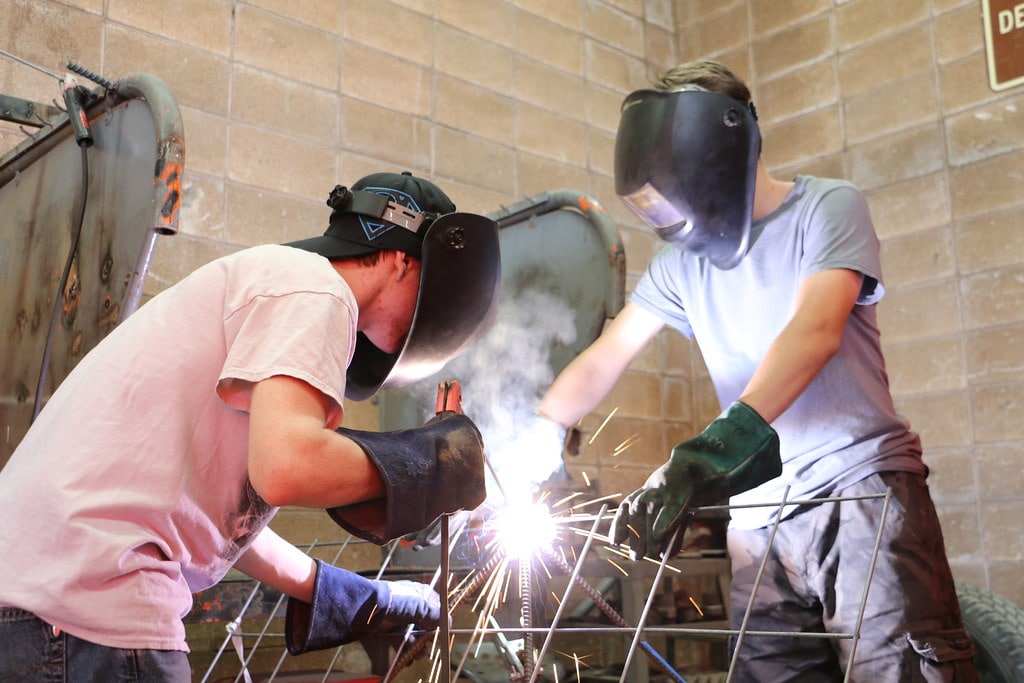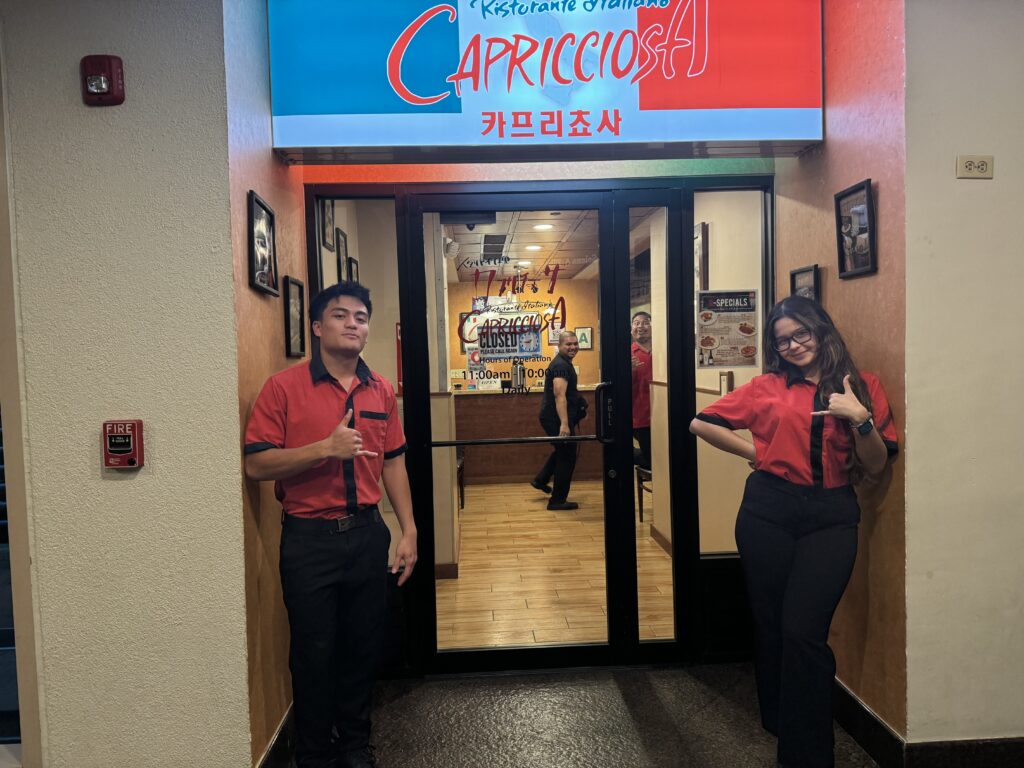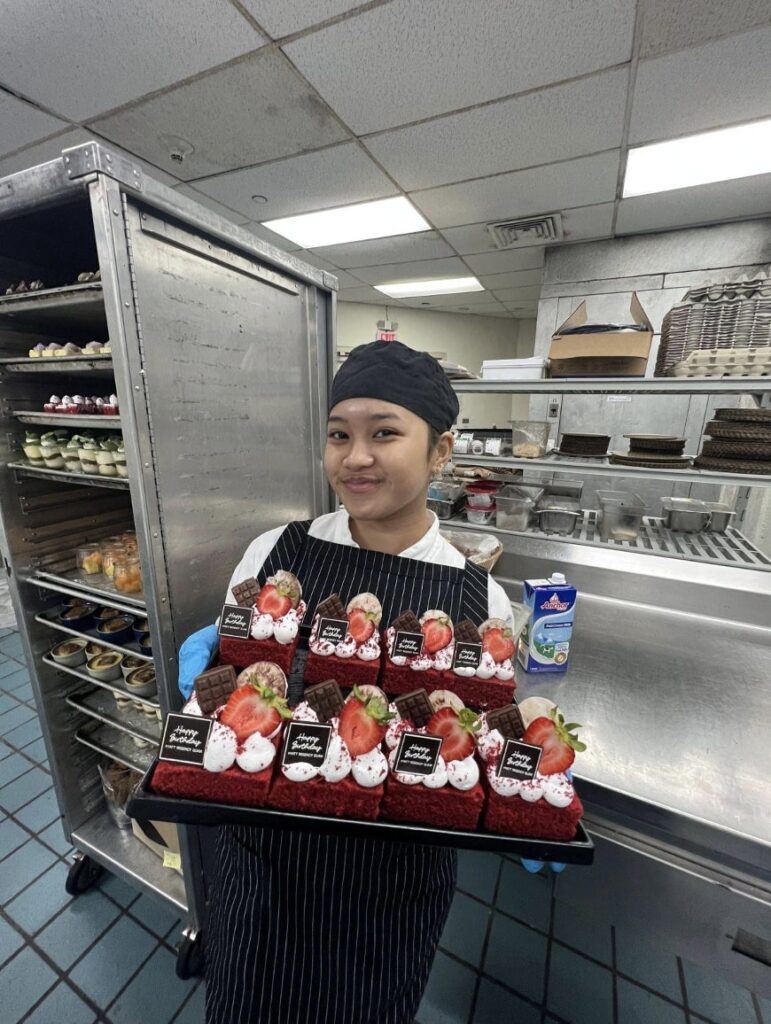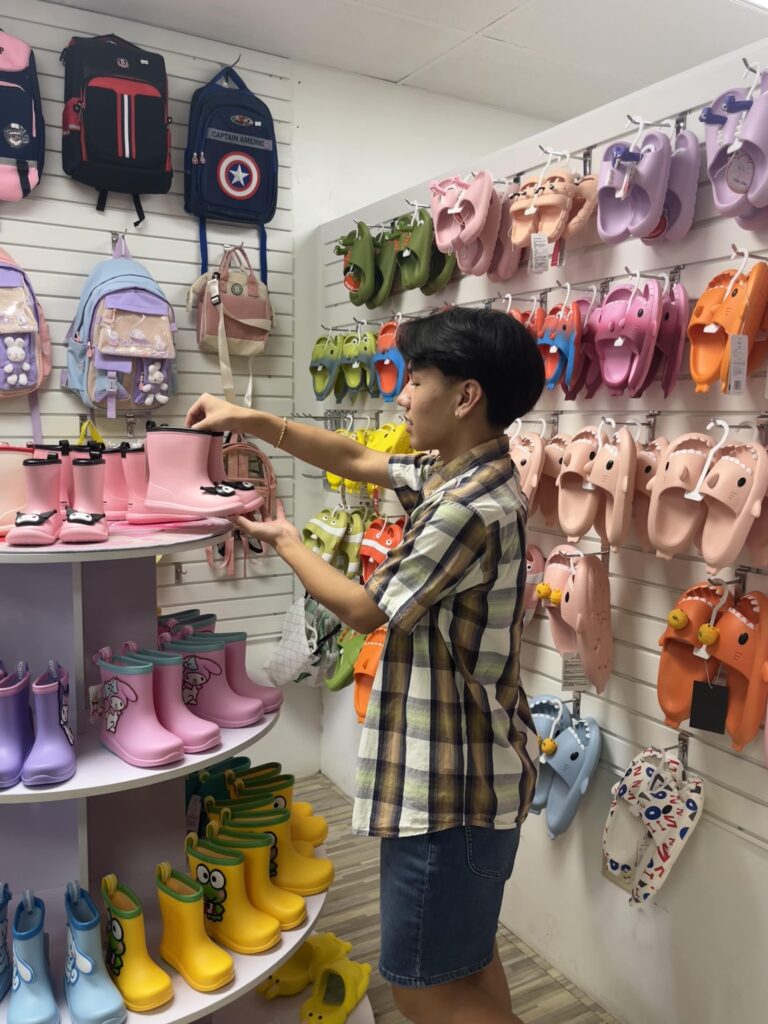April 11, 2024
Work-Based Learning: Policy, Practice, and Guidance in Guam

Work-based learning (WBL) plays a crucial role in preparing Guam’s workforce for the demands of an evolving economy. Through collaborative efforts among educational institutions, government agencies, and employers, WBL programs such as internships, apprenticeships, and school-based enterprises provide hands-on experience, industry-relevant skills, and pathways to sustainable employment. This brief offers an overview of Guam’s government policies, guidance, and practices related to WBL initiatives.
Guam Government Policies and Initiatives
Government agencies at the local, territorial, and federal levels play important roles in shaping and implementing workforce development policies and initiatives in Guam. Guam’s approach to work-based learning is guided by a combination of local legislation, federal mandates, and strategic initiatives aimed at enhancing the skills, employability, and overall productivity of its workforce. The Workforce Innovation and Opportunity Act (WIOA) serves as a primary federal framework, emphasizing WBL alongside core principles such as career pathways and business engagement. These policies and initiatives emphasize collaboration between various stakeholders, such as educational institutions, employers, and community organizations to create an ecosystem of support from education and training to sustainable employment. The Guam Department of Labor collaborates with relevant agencies to align local policies with federal guidelines, addressing the unique needs of the island’s workforce.
Guam recognizes the importance of apprenticeships as a powerful mechanism for on-the-job training. The territory actively promotes apprenticeship programs, in collaboration with various industries, to provide hands-on experiences and ensure a pipeline of skilled workers. The Guam Registered Apprenticeship Program (GRAP) stands out as a flagship initiative fostering partnerships between employers and educational institutions.


Education and Training Programs
Educational institutions such as the Guam Department of Education (GDOE), Guam Community College (GCC), and the University of Guam (UOG) are integral partners in Guam’s workforce development efforts. Offering vocational training programs, workforce certificates, and degree programs, these institutions prepare students for various industries. Through collaboration with employers and government agencies, they provide diverse WBL opportunities, including internships, apprenticeships, and on-the-job training. For example, GCC’s Apprenticeship program partners with 76 different employers to provide hands-on training and industry certification in high-demand sectors such as construction, healthcare, and hospitality. Additionally, they offer 13 Career and Technical Education (CTE) programs in Guam’s public high schools.[1]
The UOG’s internship programs provide practical experience in fields like business and environmental science, which enhances students’ employability. For example, UOG launched a workforce development program through Guam’s Green Growth (G3) Initiative and the Guam Ecosystems Collaboratorium for Corals and Oceans (GECCO) to help prepare Guam for the emerging green economy—recruiting and training members of the local community to lead volunteers in the following activities: island beautification; circular economy and recycling; invasive species removal; energy efficiency; and agriculture and aquaculture. These programs advance the region’s STEM capacity needs.[2][3] Another workforce program critical to improving the quality of life for the region’s elderly population is UOG’s Guam/Micronesia Geriatrics Workforce Enhancement Program (GWEP), which aims to transform the current health systems serving the region’s elderly and individuals with Alzheimer’s Disease and Related Dementias (ADRD).[4]
Charter schools are emerging as vital partners in addressing Guam’s skilled labor shortage. The Career Tech High Academy Charter School (CTech) is committed to delivering rigorous content that aligns with demanding academic standards and provides relevant technical knowledge. CTech’s mission is to empower students to invest in the future of our island communities here in the Marianas and beyond.[5] Following this trajectory, another charter school, the Business and Technology Academy Charter School (BTACS), is awaiting approval from the Guam Academy Charter School Council to open its doors to students in grades 9–12 for the 2024–2025 school year. According to Joe Mesa, BTACS interim board vice chairman, the school aims to equip students with the skills to navigate the intricate digital landscape and contribute meaningfully to Guam’s burgeoning business and technology sectors. The vision is for BTACS to become the premier college and career technology readiness high school in Guam.[6]
Collaborative Partnerships and Supports
Collaborative partnerships are essential for the success of WBL programs in Guam. The Guam Department of Labor, in coordination with local workforce development boards, oversees the implementation of WIOA initiatives. These boards bring together representatives from government, business, education, and community organizations to conduct labor market analysis, identify skill gaps and workforce needs, and recommend policies and programs to address workforce challenges. The Guam Workforce Development Board is an example of such a body in Guam.
The Guam Chamber of Commerce, industry associations, and employers across various sectors actively engage with educational institutions to provide work placements, mentorship opportunities, and input on curriculum development. Private sector employers provide input on workforce needs, offer job training opportunities, participate in apprenticeship programs or WBL initiatives. The private sector in Guam plays a critical role in providing employment as it employs almost 50,000 individuals compared to 15,300 employees within the local and federal government.[7] The Guam Registered Apprenticeship Program (GRAP), managed by the Department of Labor, partners with Guam Community College, University of Guam, Guam Construction Association (GCA) Trades Academy, Guam Hotel and Restaurant Association, and Guam Contractors Association to provide on the job training in high demand industries.[8]
Businesses that participate in GRAP benefit by creating a pipeline for their employment needs while receiving 50% tax credit incentives for eligible training costs such as apprentice and instructor wages.[9] There are 48 registered employers offering almost 400 apprenticeships positions in which 639 individuals are currently enrolled in the program.[10] Notably there has been a 200% increase in enrollment from prior years.[11] The work-based learning requirements through GRAP can range from completing 2,000–8,000 hours of experiential learning and training during a span of 2–4 years depending on the occupation.[12] In fact, industries such as telecommunications, ship repair, automotive, security, and health care have seen an increase in their skilled labor in recent years because companies involved in the program are taking advantage of apprenticeship and their partnerships with educational institutions to design innovative WBL pathway programs.[13]
The program is looking to expand to meet the demands of emerging other industries such as aviation, building maintenance repair, aquaculture, renewable energy, and education.[14] Other Government of Guam agencies also take advantage of the apprenticeship program to recruit employees and prepare for succession planning. These agencies include the Guam Police Department, Guam Customs and Quarantine Agency, Department of Corrections, Guam Power Authority to name a few.[15]
Collaboration between government agencies and employers helps ensure that workforce development programs are aligned with industry demands. An example of a successful partnership is the U.S. Department of Economic Development (DED) partnered with the Guam Contractors Association (GCA) to help alleviate the critical workers shortage that was exacerbating construction costs on the island. GCA established a vocational training program, the GCA Trades Academy, in 2006, but struggled to secure permanent facilities to support its programs. In 2016, with the support of a $2 million grant from DED, GCA acquired property in which now more than 300 Guamanians are annually receiving instruction in high-demand occupations like carpentry, HVAC maintenance, plumbing, welding, and project management.[16]
Guam’s government agencies, including the Department of Labor and the Guam Economic Development Authority (GEDA), offer a range of support services for students, workers, and employers to facilitate access to WBL opportunities. These services may include career counseling, job placement assistance, transportation subsidies, and financial aid programs. Targeted initiatives are available to support underserved populations, such as veterans, individuals with disabilities, and low-income residents. Additionally, GEDA’s Workforce Development Division provides grants and incentives to employers to promote the hiring and training of local talent, further strengthening the WBL ecosystem.
While government, businesses, and education institutions may provide additional services to support education and training and increase success rates, nonprofit organizations and community groups also contribute to the island’s workforce development. They often play supportive roles by providing services such as job readiness training, career counseling, and support for disadvantaged populations such migrant and homeless populations. Additionally, these organizations may also advocate for policies that promote workforce development and economic opportunity for all residents.
Another notable organization is the Guam Association for Career and Technical Education (ACTE), established in 2017 by a group of dedicated CTE professionals including Dr. Sam Mabini Young, Dr. Bert Johnston (GCA Trades Academy), Rose Marie Nanpei (GCC), Eric Chong (GCC), Marivic Schrage (GCC), and Joseph Sanchez (Guam DOE), with the aim of becoming an associate member of the National ACTE.[17] This incorporated organization has a primary focus on CTE, seeking to raise awareness, promote advocacy, foster local research agendas, provide technical assistance, facilitate networking activities, contribute to policy development, and serve as a resource clearinghouse. It stands as another example of the impactful partnerships crucial for advancing WBL initiatives and driving progress for Guam and the wider region.[18]


Challenges and Opportunities
While Guam has made significant strides in promoting WBL, several challenges remain and require continued investment in infrastructure, capacity building, stakeholder and labor workforce engagement, and increasing qualified workers whose skills match the demands of Guam’s industries. However, Guam’s unique cultural diversity and strategic location present opportunities for innovative work-based learning that meet the evolving needs of employers and a growing workforce. Based on the 2024 Executive Budget Request Economic outlook, Guam is expected to see an upsurge in anticipated economic activity with inflows of funds from tourism, federal expenditures, and construction capital investment resulting from the progression of the Camp Blaz Marine Corps base construction activity, a record level of construction projects, and continued recovery in the tourism sector.[19]
More specifically, Guam’s strategic position in the Pacific, presents significant challenges and opportunities. The U.S. Military owns 25% of the land on Guam, which is significant given that the size of Guam is comparable to the city of Chicago.[20] There are currently about 22,000 military personnel and families in Guam, which accounts for almost 13% of the island’s population and this number is expected to grow with the resettlement of the 5,000 marines from Okinawa, Japan and additional members to support the new missile defense system.[21] The Department of Defense’s five-year plan outlined in the Future Years Defense Program (FYDP) calls for spending about $7.3 billion on military construction on the island from FY2024 through FY2028. (Service and Tilghman, 2023) The Missile Defense Agency is planning an additional $1.7 billion to implement an integrated missile defense system in Guam. The potential effects of the military buildup on the workforce include the following.
• Job Creation and Skilled Labor: The military build-up will lead to an increase in employment opportunities and is likely to create a demand for various types of jobs such as construction, engineering, logistics, security, information technology, healthcare, transportation, and support services. There could be an increased demand for training programs, vocational education, and certifications to prepare workers for these roles.
• Economic Growth and increased labor demands: The increase in military personnel and their families could lead to increased consumer spending, infrastructure development, and business activity benefiting various sectors of the economy and generating additional jobs. Congress and DOD also face questions about Guam’s civilian infrastructure—electricity, roads, water, housing—that affect U.S. military readiness on the island. More people will place pressure on local services not provided directly by the military. The local government and service providers may need to expand its capacity, resources, and labor force to meet the needs of the growing population.
Overall, while the U.S. military build-up in Guam is expected to bring economic opportunities and development, it also poses challenges and considerations for the local workforce, economy, and community. Effective planning, collaboration between stakeholders, and investment in infrastructure and human capital will be essential to maximize the benefits and mitigate potential adverse effects of the build-up.
Based on a September 2023 publication, the Department of Labor reported that there are 122,0680 individuals that make up the civilian labor force of which 50,690 are not in the labor force, meaning individuals 16+ of age who are labeled as not employed or unemployed.[22] Of those in the labor force, there is a 58% participation rate.[23] Furthermore, an analysis presented in Guam’s WOIA 2020–2023 State Plan showed that of the individuals not in the workforce, 97.5% did not want a job during the survey period and 2.4% wanted jobs during the survey period but did not look for work. Some of the reasons given were: believe no job available; cannot find work; school attendance; family responsibility; and cannot arrange childcare. These are important considerations to removing barriers to various paths from education to employment.
HIREGUAM, the official job bank for the island of Guam under the American Job Center’s free online service for job seekers, students, and businesses currently (February 2024) has 1,794 jobs posted for positions in Guam. While there are jobs available, the WIOA reports that the challenge is improving the “supply” or quality of workers to effectively match the demand of employers.[24] These challenges underscore the significance of collaborative partnerships between government, industries, and educational institutions to develop diverse pathways that are accessible and WBL in steps with current industry standards to increase a qualified and skilled labor participation not only for the current demands but in line with the evolving economy and its emerging industries.
Conclusion
Work-based learning is a cornerstone of Guam’s workforce development strategy, providing a pathway to employment success for students and workers alike. By fostering collaboration among educational institutions, government agencies, and employers, Guam is well-positioned to expand and enhance its WBL programs, driving economic growth and prosperity across the island. Continued investment, stakeholder engagement, strategic planning, effective implementation, and continuous learning and improvements are essential to realizing the full potential of WBL to increase labor force participation, which contributes towards a thriving economy uplifting the quality of life for all that call Guam home.
[2] University of Guam, 2021
[3] Guam Ecosystems Collaboratorium for Corals and Oceans (GECCO), 2021
[4] University of Guam, 2024
[5] Career Tech High, n.d.
[6] Nogoy, 2024
[7] WIAO State Plan, n.d.
[8] Department of Labor Government of Guam, 2023a
[9] Department of Labor Government of Guam, 2023a
[10] Department of Labor Government of Guam, 2023b
[11] Dell’Isola, 2023
[12] Department of Labor Government of Guam, 2023b
[14] Dell’Isola, 2023
[15] Dell’Isola, 2023
[16] U.S. Economic Development Administration, 2022
[17] Guam ACTE, n.d.
[18] Guam ACTE, n.d.
[19] Office of the Governor, 2023
[20] Service and Tilghman, 2023
[21] Service and Tilghman, 2023
[22] Bureau Of Labor Statistics, Department of Labor, Government of Guam, 2024
[23] Bureau Of Labor Statistics, Department of Labor, Government of Guam, 2024
[24] WIAO State Plan, n.d.
References
Career Tech High. (n.d.). About Career Tech High. Retrieved from Career Tech High: https://careertechguam.org/about/mission-and-vision
Dell’Isola, D. (2023, November 16). Letter: Apprenticeship programs have helped dozens of companies fill gaps during labor shortage. Retrieved from Pacific Daily News: https://www.guampdn.com/opinion/letter-apprenticeship-programs-have-helped-dozens-of-companies-fill-gaps-during-labor-shortage/article_d1f0968c-8423-11ee-b4c4-d764e41c5d96.html
Department of Labor Government of Guam. (2023a). Guam Registered Apprenticeship Program. Retrieved from Department of Labor Government of Guam: https://dol.guam.gov/employment-and-training/apprenticeship/
Department of Labor Government of Guam. (2023b). Guam Registered Apprenticeship Program. Retrieved from Department of Labor Government of Guam: https://docs.google.com/spreadsheets/d/1DY1jxf9d3u_dRm1b1gwld2Z6DrNFP43hdMNoM0Y-pms/edit#gid=0
Guam ACTE. (n.d.). Guam ACTE Overview. Retrieved from Guam ACTE: https://guamacte.org/about-us/overview
Guam Community College. (2022, May). Retrieved from Guam Community College: https://guamcc.edu/sites/default/files/ccr_2021_-_final.pdf
Guam Ecosystems Collaboratorium for Corals and Oceans (GECCO). (2021). About Guam EPSCOR. Retrieved from Guam Ecosystems Collaboratorium for Corals and Oceans (GECCO): https://guamepscor.uog.edu/about-guam-epscor/
Nogoy, K. (2024, February 16). Guam could soon have another charter school. Retrieved from Pacific Daily News: https://www.guampdn.com/news/guam-could-soon-have-another-charter-school/article_35fdd890-cbac-11ee-aec9-5fb1fc2d9b1d.html
Office of the Governor. (2023, January 31). Governor’s Budget Prioritizes Public Safety. Retrieved from Office of the Governor: https://bbmr.guam.gov/wp-bbmr-content/uploads/2023/01/FY2024-EXECUTIVE-BUDGET-REQUEST-E-VIEW-Compressed.pdf
Service, C. R., and Tilghman, A. (2023). Guam: Defense Infrastructure and Readiness. Washington, D.C.: Congressional Research Service.
U.S. Economic Development Administration. (2022, February 8). EDA and GCA Partner to Upskill Guam’s Workforce. Retrieved from U.S. Economic Development Administration: https://www.eda.gov/impact/success-stories/workforce-development/eda-and-gca-partner-upskill-guams-workforce
University of Guam. (2021, May 12). Press Release: UOG seeks applicants for new G3 Conservation Corps. Retrieved from University of Guam: https://www.uog.edu/news-announcements/2020-2021/press-release-uog-seeks-applicants-for-new-g3-conservation-corps.php
University of Guam. (2024). Margaret Perez Hattori-Uchima School of Health » Guam/Micronesia Geriatric Workforce Enhancement Program. Retrieved from University of Guam: https://www.uog.edu/schools-and-colleges/school-of-health/guam-micronesia-geriatric-workforce-enhancement-program.php
WIAO State Plan. (n.d.). Guam PYs 2020-2023 State Plan Common Elements. Retrieved from WIAO State Plan: https://wioaplans.ed.gov/node/20931



